-
 Bitcoin
Bitcoin $119000
-2.21% -
 Ethereum
Ethereum $4315
1.01% -
 XRP
XRP $3.151
-3.11% -
 Tether USDt
Tether USDt $0.0000
0.00% -
 BNB
BNB $808.5
-0.71% -
 Solana
Solana $175.8
-4.21% -
 USDC
USDC $0.9999
0.00% -
 Dogecoin
Dogecoin $0.2250
-3.92% -
 TRON
TRON $0.3469
1.77% -
 Cardano
Cardano $0.7818
-3.81% -
 Chainlink
Chainlink $21.47
-2.10% -
 Hyperliquid
Hyperliquid $43.30
-6.81% -
 Stellar
Stellar $0.4370
-2.84% -
 Sui
Sui $3.682
-4.40% -
 Bitcoin Cash
Bitcoin Cash $590.8
2.67% -
 Hedera
Hedera $0.2484
-5.20% -
 Ethena USDe
Ethena USDe $1.001
0.00% -
 Avalanche
Avalanche $23.10
-4.29% -
 Litecoin
Litecoin $119.2
-3.96% -
 Toncoin
Toncoin $3.409
0.90% -
 UNUS SED LEO
UNUS SED LEO $9.016
-1.29% -
 Shiba Inu
Shiba Inu $0.00001304
-3.82% -
 Uniswap
Uniswap $11.18
1.33% -
 Polkadot
Polkadot $3.913
-3.51% -
 Cronos
Cronos $0.1672
-3.08% -
 Dai
Dai $1.000
0.02% -
 Ethena
Ethena $0.7899
-4.70% -
 Bitget Token
Bitget Token $4.400
-1.23% -
 Pepe
Pepe $0.00001132
-5.93% -
 Monero
Monero $257.9
-6.44%
How to manage DOT staking addresses on Ledger Live?
Ledger Live facilitates DOT staking by connecting your Ledger device to a validator, but it's crucial to choose a reliable validator to mitigate risks like slashing.
Mar 29, 2025 at 02:14 am
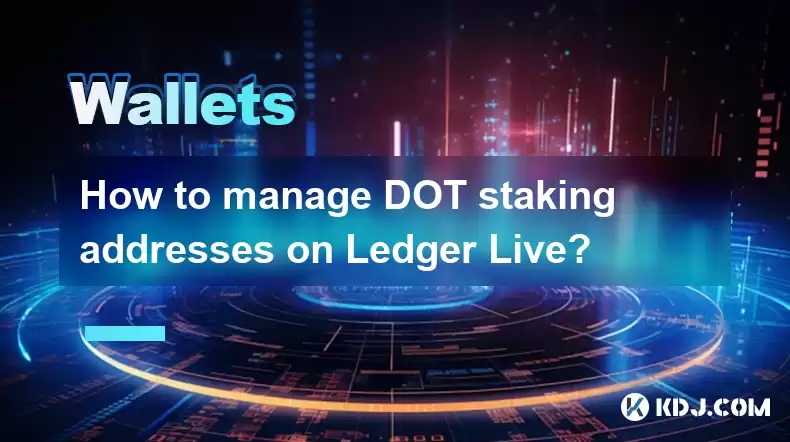
Understanding DOT Staking and Ledger Live Integration
Polkadot (DOT) staking allows users to lock up their DOT tokens to secure the network and earn rewards. Ledger Live, a user-friendly interface for managing Ledger hardware wallets, offers a convenient way to interact with your DOT holdings, including staking. However, it's crucial to understand that Ledger Live itself doesn't directly handle staking; it acts as an intermediary, connecting your Ledger device to a chosen validator. This means security relies on both your Ledger device and the chosen validator.
Choosing a Validator for Your DOT Staking
Selecting a reliable validator is paramount. A trustworthy validator will consistently maintain the network and distribute rewards fairly. Research is key. Look for validators with a proven track record, high uptime, and transparent communication. Consider factors like commission rates, which directly impact your rewards. Never blindly trust a validator's claims; independently verify their reputation. Multiple resources exist online to help you assess validator performance.
Setting up DOT Staking on Ledger Live: A Step-by-Step Guide
Before beginning, ensure your Ledger device is updated to the latest firmware and that Ledger Live is also up-to-date. This is crucial for security and compatibility.
Connect your Ledger device: Plug your Ledger device into your computer and open Ledger Live. Unlock your device and ensure the Polkadot application is installed and open on your Ledger.
Navigate to the Polkadot application: In Ledger Live, find your Polkadot account. You should see your DOT balance displayed.
Select your staking options: Ledger Live will guide you through the staking process. You'll need to choose a validator from the list provided. Carefully review the validator's details before proceeding.
Nominate your validator: After selecting your validator, you'll need to nominate them. This action essentially locks your DOT tokens to support this validator.
Confirm the transaction: Ledger Live will display a transaction summary. Carefully review the details before confirming the transaction on your Ledger device.
Monitor your rewards: Once your DOT is staked, you can monitor your accumulated rewards within Ledger Live. The frequency of reward payouts varies depending on the validator and network activity.
Understanding the Risks Involved in DOT Staking
While DOT staking offers potential rewards, it's essential to acknowledge the inherent risks. Your staked DOT tokens are locked for a period, and you may lose some or all of your rewards if your chosen validator underperforms or is slashed. Slashes occur when validators misbehave and can result in a portion of their staked DOT being burned. Choosing a reputable validator significantly mitigates this risk but doesn't eliminate it entirely.
Managing Your Staking Addresses within Ledger Live
Ledger Live provides a clear overview of your staked DOT. You can view your nominated validator, the amount of staked DOT, and your accumulated rewards. However, remember that you are not directly managing your staking address; you're interacting with the validator through Ledger Live. Any changes, such as unstaking or changing validators, must be done through Ledger Live, following the provided instructions.
Understanding the Role of Ledger in DOT Staking Security
Your Ledger device serves as a crucial security layer in the entire process. All transactions are signed on your Ledger device, ensuring that only you have control over your DOT. This significantly reduces the risk of unauthorized access and theft. However, it's still crucial to maintain good security practices, such as using strong passwords and keeping your Ledger device firmware updated.
Troubleshooting Common Issues with DOT Staking on Ledger Live
Sometimes, you might encounter issues during the staking process. These could include connection problems, transaction failures, or difficulties understanding the interface. Ledger's support website and community forums are valuable resources for troubleshooting. Always refer to official documentation before attempting any troubleshooting steps. Avoid using unofficial tools or guides, as these could compromise your security.
Frequently Asked Questions
Q: Can I stake my DOT directly from my Ledger device without Ledger Live?
A: No, Ledger Live acts as an intermediary to interact with the Polkadot network for staking. You cannot stake directly from the device itself.
Q: What happens if my chosen validator is slashed?
A: If your chosen validator is slashed, a portion of your staked DOT may be lost. The amount lost depends on the severity of the infraction. Choosing a reputable validator minimizes this risk.
Q: How long does it take to unstake my DOT?
A: Unstaking DOT takes time, typically several days or even weeks, depending on the network's congestion.
Q: Can I change my validator after staking?
A: Yes, you can typically change your validator after a certain period, but this process also takes time and may involve unstaking and restaking.
Q: What are the fees associated with DOT staking?
A: There are transaction fees associated with staking and unstaking, as well as validator commission fees, which are deducted from your rewards.
Q: Is it safe to use Ledger Live for DOT staking?
A: Ledger Live, when used correctly and with a reputable validator, is a relatively safe method for staking DOT. However, remember that inherent risks associated with staking remain.
Q: What should I do if I lose access to my Ledger device?
A: Losing access to your Ledger device means you lose access to your DOT. Always keep your recovery seed phrase secure and in a safe place. Never share it with anyone.
Disclaimer:info@kdj.com
The information provided is not trading advice. kdj.com does not assume any responsibility for any investments made based on the information provided in this article. Cryptocurrencies are highly volatile and it is highly recommended that you invest with caution after thorough research!
If you believe that the content used on this website infringes your copyright, please contact us immediately (info@kdj.com) and we will delete it promptly.
- PumpFun (PUMP) Price: Riding the Meme Coin Wave or Facing a Wipeout?
- 2025-08-12 16:50:12
- Uniswap's Legal Clarity Fuels Price Target: Will UNI Hit $12.85?
- 2025-08-12 17:30:13
- Arctic Pablo Coin: Meme Coin Growth Redefined?
- 2025-08-12 16:50:12
- Pumpfun, Snorter Token, and Meme Coin Mania: What's the Hype?
- 2025-08-12 17:30:13
- Crypto, Long-Term, Small Investment: Finding Gems in the Digital Rough
- 2025-08-12 17:35:12
- Do Kwon's Terra Collapse: Guilty Plea Looms – A Stablecoin Fraud Saga
- 2025-08-12 17:40:12
Related knowledge
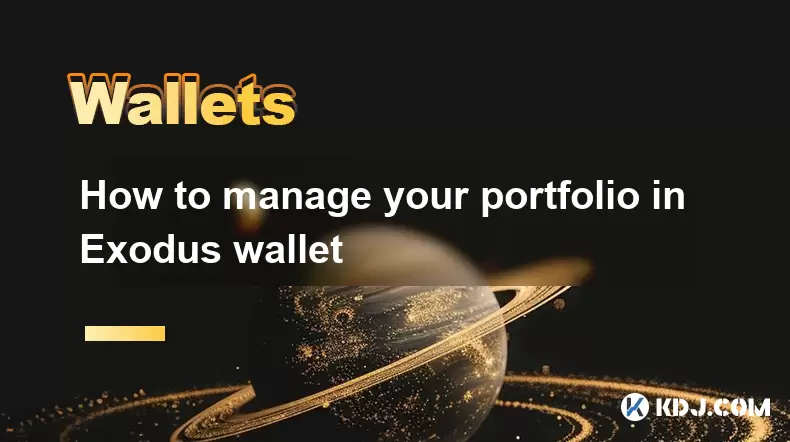
How to manage your portfolio in Exodus wallet
Aug 08,2025 at 10:07pm
Understanding the Exodus Wallet InterfaceThe Exodus wallet is a non-custodial cryptocurrency wallet that supports a wide range of digital assets. When...
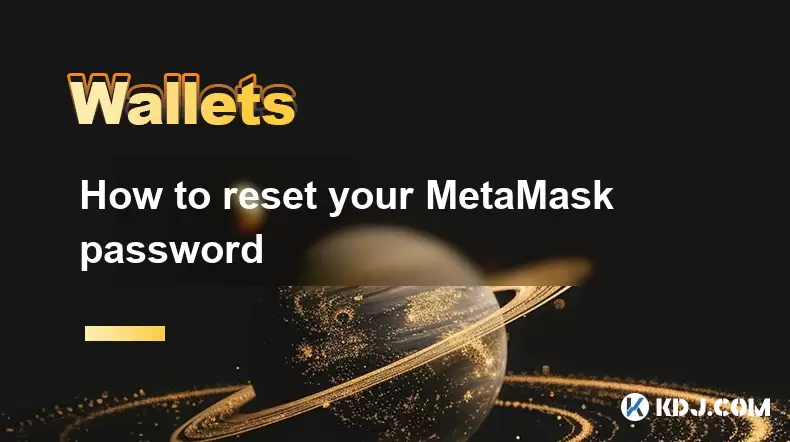
How to reset your MetaMask password
Aug 08,2025 at 01:28pm
Understanding the MetaMask Password Reset ProcessMany users confuse the MetaMask password with the seed phrase or private key, but they serve differen...

How to buy Dogecoin on MetaMask
Aug 08,2025 at 03:42am
Understanding Dogecoin and MetaMask CompatibilityDogecoin (DOGE) is a popular meme-based cryptocurrency that operates on its own blockchain, originall...
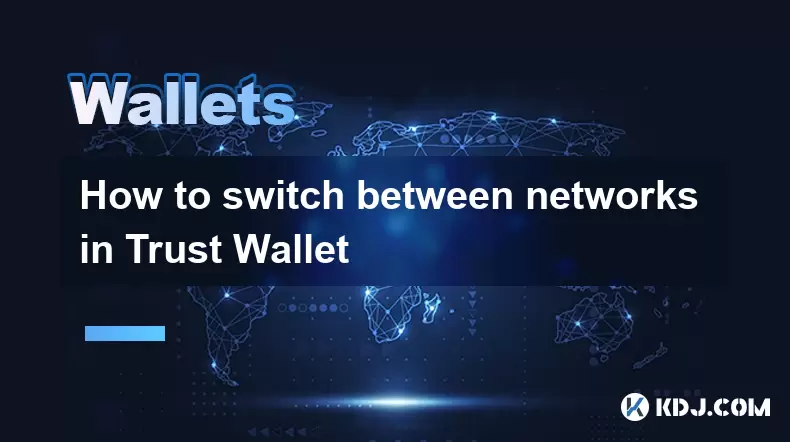
How to switch between networks in Trust Wallet
Aug 09,2025 at 11:07am
Understanding Network Switching in Trust WalletSwitching between networks in Trust Wallet allows users to manage assets across different blockchains, ...
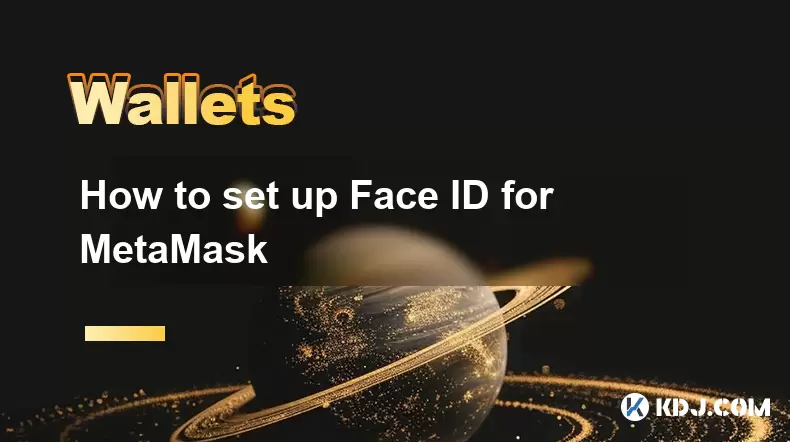
How to set up Face ID for MetaMask
Aug 12,2025 at 02:42am
Understanding Face ID and Its Role in MetaMask SecurityMetaMask is a widely used cryptocurrency wallet that allows users to interact with the Ethereum...
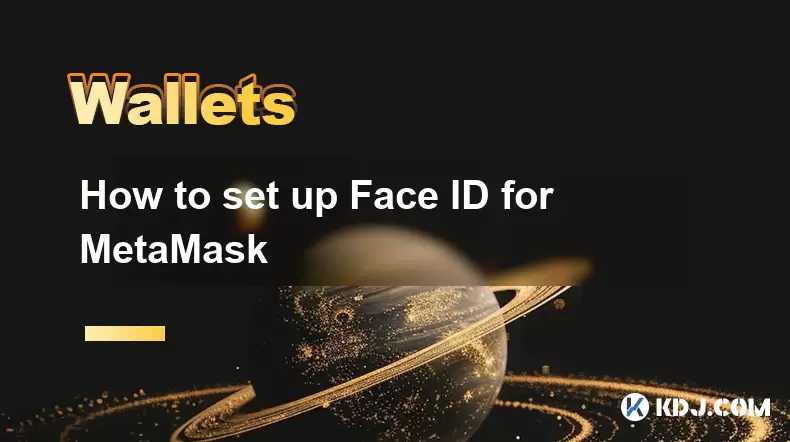
How to set up Face ID for MetaMask
Aug 11,2025 at 09:28am
Understanding Face ID and Its Role in MetaMask SecurityFace ID is a biometric authentication system developed by Apple that uses facial recognition to...

How to manage your portfolio in Exodus wallet
Aug 08,2025 at 10:07pm
Understanding the Exodus Wallet InterfaceThe Exodus wallet is a non-custodial cryptocurrency wallet that supports a wide range of digital assets. When...

How to reset your MetaMask password
Aug 08,2025 at 01:28pm
Understanding the MetaMask Password Reset ProcessMany users confuse the MetaMask password with the seed phrase or private key, but they serve differen...

How to buy Dogecoin on MetaMask
Aug 08,2025 at 03:42am
Understanding Dogecoin and MetaMask CompatibilityDogecoin (DOGE) is a popular meme-based cryptocurrency that operates on its own blockchain, originall...

How to switch between networks in Trust Wallet
Aug 09,2025 at 11:07am
Understanding Network Switching in Trust WalletSwitching between networks in Trust Wallet allows users to manage assets across different blockchains, ...

How to set up Face ID for MetaMask
Aug 12,2025 at 02:42am
Understanding Face ID and Its Role in MetaMask SecurityMetaMask is a widely used cryptocurrency wallet that allows users to interact with the Ethereum...

How to set up Face ID for MetaMask
Aug 11,2025 at 09:28am
Understanding Face ID and Its Role in MetaMask SecurityFace ID is a biometric authentication system developed by Apple that uses facial recognition to...
See all articles

























































































